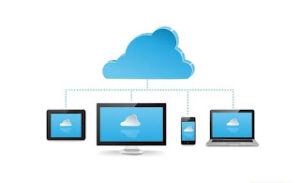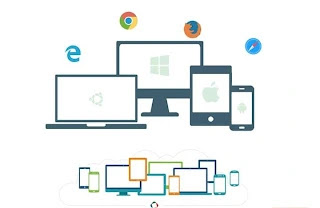The rise of e-books and audiobooks has reduced the production, printing and sales of printed books in recent years. But many still believe that paper books have an important place right now and that paper books will survive well into the future despite the dominance of digital technology.
Here’s why paper books are still popular, what advantages paper books have over digital books, and how paper books will evolve and coexist with technology.
Possible Threats To Paper Books
The popularity of e-readers, tablets, smartphones and digital reading has raised some questions about the future of paper books. Here are some facts about book printing and sales in the recent past:
• In 2015, sales of e-books exceeded sales of hardcover books.
• Currently one-third of all books sold are e-books.
• E-book sales grew 500% from 2008 to 2018, while print book sales remained unchanged or declined.
• When bookstores and libraries closed in 2020 due to the pandemic, print book sales fell by 11%. On the other hand, digital book sales increased by 17% during this period.
• According to a survey of readers, 65% of readers now read two types of books, paper books and digital books. And there are 25% readers, who only read books printed on paper.
These figures show that digital books are gradually taking the place of paper books. But the reality is not so simple.
Why Printed Books Are Still Popular
Even with the rise of e-books, printed books are still ahead in some subjects. And for this reason, the paper book still retains its appeal to book lovers.
Touchable—Digital books do not have the outward appearance that paper books have. Paper books can be held, touched, sensed. The feeling of touching a book, its aesthetics and even its smell make the feeling of reading a book more alive.
Eye comfort—Reading digital books for long periods of time can cause eyestrain and even headaches. Paper books don’t have that problem, they even improve your sleeping habits.
Attention—Paper books are better for holding attention and reading memory. Because digital books have many options for distraction.
Ownership—Since paper books exist in the real world, the sense of ownership in paper books lasts longer than e-book digital licenses.
Collectable quality—printed books can become rare collectibles. Special issues are highly prized by many book collectors.
Books as gifts – Printed books are very popular as gifts. Through the gift of paper books, one can share one’s interests and create new memories.
References—Paper books have been found to be more useful than digital screens for data analysis and easier comprehension in research.
While e-books are attractive due to ease of use and storage, printed books can impact our senses in a way that digital books cannot. So many readers find the paper book reading experience more fulfilling.
Advantages Of Printed Books
Apart from sentimental issues, paper books have other practical benefits.
No electricity or internet needed—print books can be read anytime, anywhere. It does not require electricity, devices or internet. So if you go to a place without electricity or internet for some reason, paper books are most useful.
Reliable—Print books don’t suffer from the software problems, system crashes, or technical glitches that digital books can.
Freedom of the reader—readers can read books at their own pace. You can turn the pages of the book by yourself. One can focus on reading without any distractions, without the urge to multitask.
Note-keeping facilities—highlighting, margin note keeping, dog-earing (folding corners of the book) make it much easier for the reader to find something in a paper book.
Spatial memory – on which page of the book, on which line the information was written, so if remembered, it is well embedded in the reader’s memory.
Many would say that paper books are now obsolete. However, there are practical and emotional benefits that will keep the popularity of paper books alive.
The Evolution And Future Of The Printed Book
Rather than disappearing, paper books are evolving and adapting themselves to digital books. Many speculate that at some point fifty percent of the total number of books will be in the possession of printed books and this situation will stabilize. Anything else that can happen in the world of printed books:
New types of content – In the future we will see the use of various digital content accompanying paper books. Using QR codes, the author’s speech, context of the story or audio-visual content will be added to the book.
Greater focus on design—Publishers will focus more on beautiful covers, illustrations, special issues, extras, art prints, etc. to enhance the aesthetic appeal of printed books.
Niche market—publishers who do small but high-quality work will publish special editions and special editions of books for book collectors. And book market will be created for readers who are not interested in using technology.
Non-fiction books—There are some non-fiction subjects like literary criticism, history, philosophy, textbooks—that require close attention. The appeal of paper books will remain with the readers of all these books.
Self Employed Bookstores—These days, local bookstores seem to be getting a lot of support from readers. These shops are becoming the center of various cultural activities of the local community. These stores are building a collection of books that is built not by algorithms, but by human interest and love.
Libraries—The public library will continue to be popular as a place where people can read books for free and enjoy reading together. In 2019, 62% of Americans visited the library at least once a year, according to data. This shows how the library is growing in popularity.
In this way, using digital technology, rather than disappearing, the paper book is strengthening its place.
What Challenges Can Paper Books Face In The Future?
Although paper books will survive in many ways, some challenges may affect their production, printing and sales.
Less space for books—Decreasing sales will reduce the number of printed books in bookstores and libraries. Readers will also find fewer new books due to the reduced number of books.
Higher cost of publishing—Due to reduced publishing, printing costs for paper books will be much higher than for digital books. Because the production cost of digital books is very low. As a result, paper books will become more expensive.
Impact on the Environment—The carbon emissions involved in publishing and distributing paper books are a concern for many readers. But when it comes to e-waste, printed books are still more environmentally friendly than digital devices.
Changing Readers’ Habits – The new generation of readers are more interested in reading books through digital media. Their cultural perspective is that paper books are a thing of the past.
Declining leisure time – Where people used to choose to read books in their spare time, now paper books have to compete with various forms of entertainment including streaming media, gaming, social media.
While the challenges described are no less important, there is little danger that they will lead to the complete disappearance of paper books. But to meet the challenges, those involved in the publishing industry now have to think in a new way. They are thinking about new forms of books. Also thinking about how to add something new to the book.
Conclusion: Paper Books Will Last Longer
Avoid getting lost, it can be said that paper books will survive in the near future due to certain advantages. Although digital books now dominate the book market, paper books are unmatched for making the reading experience more sensual, more intellectual.
As long as there are book readers in the world, whether serious or casual readers, there will be a market for paper books.
In these turbulent times of the digital world, paper books give us stability, focus and a sense of touch. So the printed book will remain not as a souvenir, but as an integral part of our cultural heritage.





